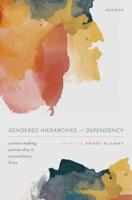Publisher's Synopsis
Excerpt from Washita Battlefield National Historic Site, Oklahoma Water Resources Scoping Report
Washita Battlefield National Historic Site is a historic site set aside primarily to interpret an important battle in the struggle between Native Americans and the US Cavalry in the opening of the west. The water-related resources of the site serve not only as important natural components but are an integral component of the historical context of the site and its cultural landscape. In selecting a winter campsite, Chief Black Kettle of the Southern Cheyenne Tribe and his followers chose a location close to a water supply sufficient for the assembled tribes and their numerous ponies, a site whose riparian zone provided adequate wood for winter fires, and an encampment whose low-lying position and bordering alluvial terraces offered a modicum of protection from the winter winds prevalent on the Great Plains.
This Water Resources Scoping Report is being provided at the request of the National Historic Site to assemble information pertaining to the unit's water resources for use in the development of the National Historic Site's first General Management Plan (gmp). In addition, information pertaining to existing water-resource issues and management concerns is being provided to assist the National Historic Site in the development of their Natural Resources Management Plan which will be completed subsequent to the completion of the Glyn) This current assessment identifies and discusses seven water-related management issues and further provides management with recommended actions to begin to address each of the these concerns. These include.
About the Publisher
Forgotten Books publishes hundreds of thousands of rare and classic books. Find more at www.forgottenbooks.com
This book is a reproduction of an important historical work. Forgotten Books uses state-of-the-art technology to digitally reconstruct the work, preserving the original format whilst repairing imperfections present in the aged copy. In rare cases, an imperfection in the original, such as a blemish or missing page, may be replicated in our edition. We do, however, repair the vast majority of imperfections successfully; any imperfections that remain are intentionally left to preserve the state of such historical works.










